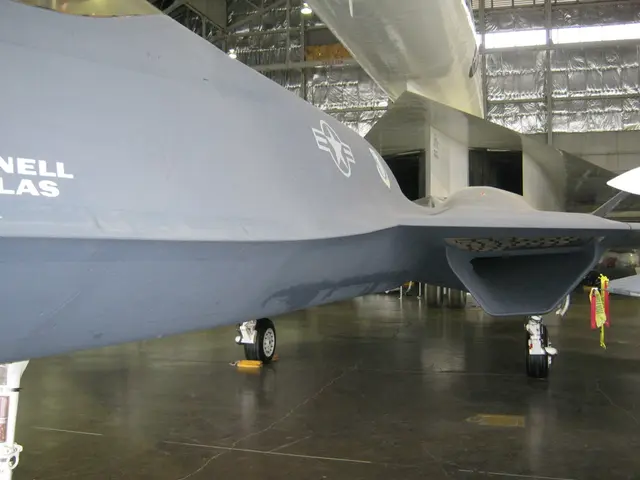Aircraft Flight Terms: Decision Altitude (DA) vs Decision Height (DH)
### Navigating Decision Altitude and Decision Height in Aviation
In the world of aviation, two terms – Decision Altitude (DA) and Decision Height (DH) – are crucial during precision approaches, particularly in Instrument Landing System (ILS) flights. While they share a common purpose, they are distinct in their usage and application.
#### Decision Altitude (DA)
DA is the altitude above sea level at which a pilot must decide whether to continue landing or abort and go around. This applies to approaches with electronic vertical guidance, such as ILS, LPV, and LNAV/VNAV approaches. In practical terms, pilots remain on the glideslope when making this decision at DA, and they may descend slightly below this altitude while deciding whether they have sufficient visual references to land safely.
#### Decision Height (DH)
DH, on the other hand, is typically referred to as the height above the landing threshold elevation at which the decision must be made. It is specifically used in CAT II and III approaches where the precision is higher, and the decision point is closer to the runway. DH is more commonly associated with ILS CAT II and III approaches, where the landing threshold is closer and the requirements for visual references are more stringent. DH is the point at which, if the pilot does not have the necessary visual references, they must initiate a missed approach.
#### Key Differences
| **Feature** | **Decision Altitude (DA)** | **Decision Height (DH)** | |-------------|---------------------------|--------------------------| | **Type of Approach** | Applies to precision approaches with electronic vertical guidance (e.g., ILS, LPV, LNAV/VNAV) | Used in CAT II and III ILS approaches | | **Reference Point** | Altitude above sea level | Height above the landing threshold elevation | | **Application** | Decision made while on the glideslope, may descend slightly below | Decision typically made closer to the runway in more precise conditions |
#### Practical Examples
- For the Olympia Regional Airport (KOLM) ILS 17, the Decision Altitude (DA) is 218' above TDZE. - In a Category I ILS approach, the aircraft flies to a Decision Altitude (DA), not DH. - In a straight-in ILS 35R, the published minimums are "6085 - 1/2". At this point, the aircraft is 200' above the touchdown zone elevation (TDZE).
#### Further Learning Opportunities
- Subscribing to the Boldmethod email provides real-world flying tips and information every week. - The Boldmethod Instrument Procedures course aims to help pilots earn their instrument rating and master IFR flying. - In CAT II/III approaches, the aircraft is equipped with a radar altimeter to measure its height above the terrain. - When reaching DA at 6,085', the aircraft is 200' above the touchdown zone elevation (TDZE). - Not all Category I ILS approaches get the aircraft down to 200 feet above TDZE. - The Decision Height (DH) for CAT II/III precision approaches is your height above the touchdown zone elevation (TDZE). - Decision Altitude (DA) is an MSL altitude used in Category I ILS approaches.
#### Visual Aid
An image below shows an ILS approach with published minimums.

In summary, understanding the difference between DA and DH is essential for safe and efficient aviation navigation. While both serve as critical decision points in precision approaches, they differ in their application and reference point, with DA being used more broadly in precision approaches and DH being specific to CAT II and III ILS approaches.
- In aviation, the terms Decision Altitude (DA) and Decision Height (DH) are integral during precision approaches, particularly in Instrument Landing System (ILS) flights.
- Decision Altitude (DA) is the altitude above sea level at which a pilot must decide whether to continue landing or abort, applicable in approaches with electronic vertical guidance like ILS, LPV, and LNAV/VNAV.
- In practical terms, while making the decision at DA, pilots remain on the glideslope and may descend slightly below this altitude.
- Decision Height (DH) is typically referred to as the height above the landing threshold elevation at which the decision must be made, commonly in CAT II and III approaches where precision is higher, and the decision point is closer to the runway.
- DH is more commonly associated with ILS CAT II and III approaches, where the landing threshold is closer, and the requirements for visual references are more stringent.
- For instance, in the Olympia Regional Airport (KOLM) ILS 17, the Decision Altitude (DA) is 218' above TDZE.
- In a Category I ILS approach, the aircraft flies to a Decision Altitude (DA), not Decision Height (DH).
- In the aerospace industry, technology, and finance, understanding the distinction between DA and DH is crucial for ensuring safe and efficient aviation navigation.
- Further training opportunities, such as the Boldmethod Instrument Procedures course, can help pilots master IFR flying and earn their instrument rating.








